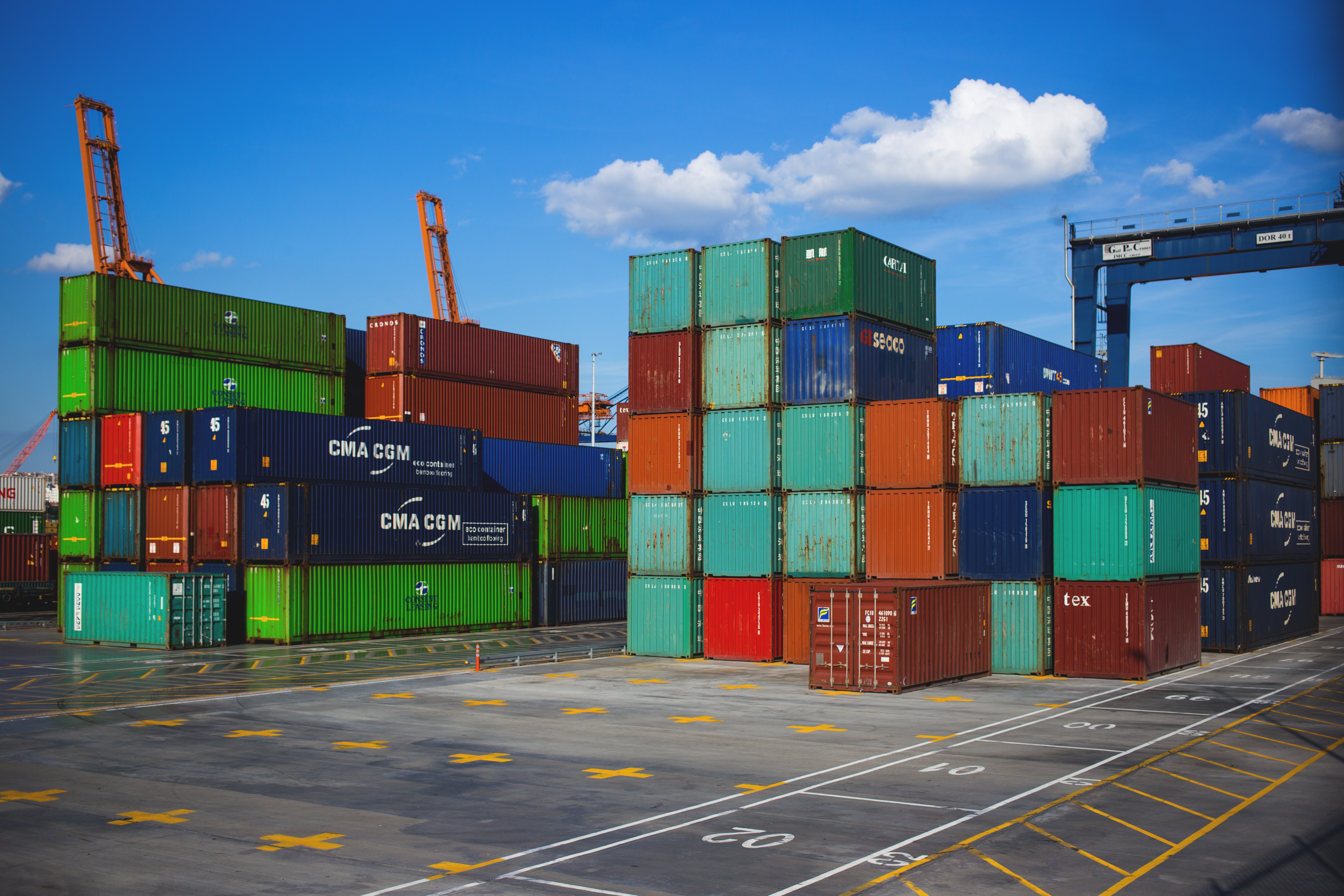In this article, Infor's Jerry Beaston discusses how 2024 warehouse management trends include the expansion of more strategically located, state-of-the-art warehouses driven by the e-commerce boom.
It also highlights key trends in the global warehouse management market. As of 2022, the market is valued at $3.4 billion and is expected to grow at a CAGR of 19% from 2023 to 2030. The e-commerce boom has driven demand for advanced warehouses to meet evolving customer expectations. Key trends for 2024 include the expansion of warehouses, addressing labor shortages through automation, increased adoption of AI and machine learning, integrating immersive tech for employee efficiency, the impact of IoT on real-time data analysis, and the rise of cloud computing in warehouse management software. Companies that embrace these innovations will gain a competitive advantage in 2024.
Read More
Topics: ERP, Supply Chain, Warehouse Management Systems, Infor M3 ERP, Enterprise Software, WMS, Supply Chain Management, Infor Partner

Choosing a successful ERP system for the flooring manufacturing industry involves considering industry-specific needs and challenges. Which are the top factors to focus on when selecting an ERP system for a flooring manufacturing business? We recommend starting with these:
Industry-Specific Functionality:
Look for an ERP system that offers features tailored to the flooring manufacturing industry. This may include modules for product lifecycle management, batch processing, quality control, inventory management (including tracking of raw materials like wood, tiles, etc.), and order management.
Material Requirement Planning (MRP):
MRP functionality is crucial for managing and planning the procurement of raw materials. Ensure that the ERP system can assist in optimizing material usage, managing inventory levels, and minimizing waste.
Product Configuration and Variants:
Flooring products often come in various sizes, styles, and configurations. Choose an ERP system that supports product configuration and handles variants efficiently. This is essential for managing different product lines and accommodating customization requests.
Read More
Topics: ERP, Infor M3, Enterprise Resource Planning, Infor M3 ERP, Infor PLM, Flooring Industry
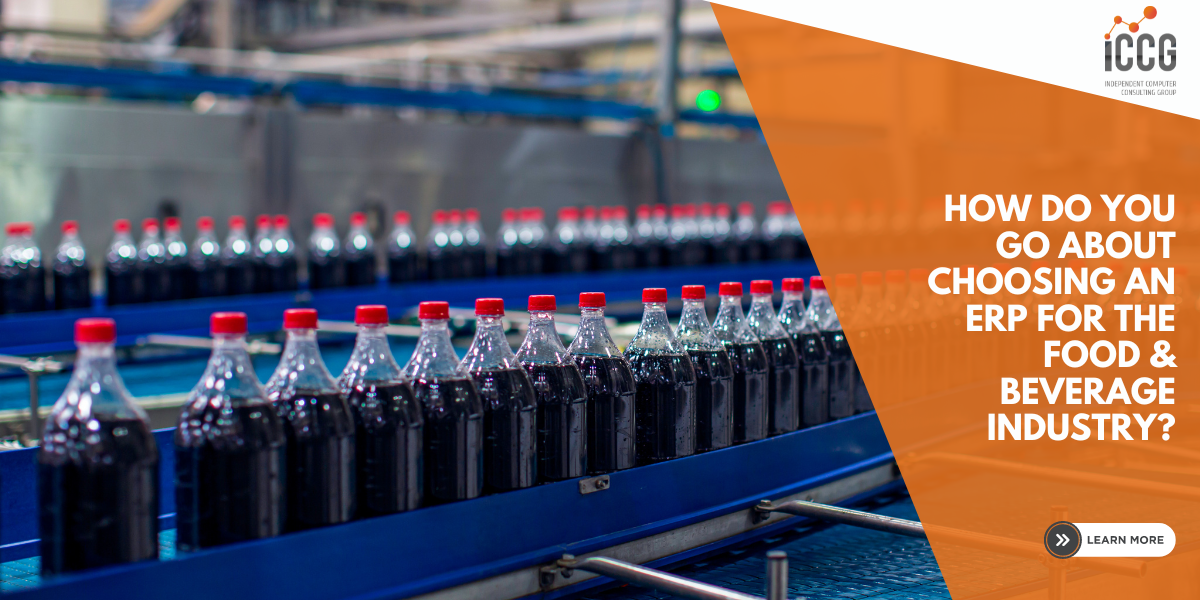
Are you struggling to choose the right ERP software solution for your business? At ICCG, we know that selecting the right ERP system can make all the difference in the success of your business operations. When evaluating ERP solutions for the food and beverage industry, it is essential to consider key selection criteria such as:
- Ease of use: A user-friendly ERP system can help you increase productivity, reduce training costs, and improve user adoption rates. Look for an ERP solution with an intuitive interface, customizable dashboards, and role-based access controls.
- System customization capabilities: Every business has unique requirements, and it is essential to select an ERP system that can be customized to meet your specific needs. Look for an ERP solution with a flexible architecture, open APIs, and a robust third-party ecosystem.
- Data security features: Protecting your sensitive business data is critical, especially in the food and beverage industry, where data breaches can result in severe reputational damage. Look for an ERP solution with robust data security features, including encryption, access controls, and regular data backups.
Read More
Topics: ERP, Food & Beverage, Infor M3, Enterprise Resource Planning, Infor M3 ERP, ERPSelection, MidMarket, ICCG
The food and beverage industry is undergoing fundamental changes in how consumers buy and what they want to know about the products. At the same time, the industry faces an increased focus on healthy eating by consumers, companies, and governments. Adding to this is a rapidly changing competitive environment with a proliferation of new channels, producers, and products that compete with established brands and outlets.
If these challenges weren’t already enough, today’s companies are also facing unprecedented changes that stress innovation, business model evolution, and supply chain agility. Having the right products with the right content and characteristics, and the right information clearly displayed is necessary. But even all that isn’t enough to guarantee success. The products must also be positioned in the right places at the right time for customers to be able to buy—and that’s the job of the supply chain.
To keep up with all of this, an effective food and beverage supply chain must be fully in sync with the consumer through technology-enabled sensing to satisfy multiple channels with seamless visibility and fulfillment.
Read More
Topics: ERP, Food & Beverage, Supply Chain, Food Technology, CloudSuite Food & Beverage, Infor M3 ERP, Enterprise Software, WMS, Supply Chain Management
Even when your warehouse operations seem to be running smoothly, there is always room for improvement and a need to stay up to date with innovation. While steps are taken to keep warehouse operations at peak performance, when fulfilment times and levels are jeopardized, it’s still up to you and your team to race to recover, to ensure actions to get back on track are taken correctly so that product can make its way out the door, and time is always working against you.
If your organization previously reviewed and dismissed the value of moving your warehouse management system (WMS) to the cloud, it’s time to reevaluate. Decisions that seemed to make sense last year or even last quarter, likely look very different with new challenges emerging over the past several months. By empowering critical systems like a WMS with cloud capabilities, your organization can scale quickly, maximize productivity, and minimize outages and downtime to prevent bringing the company’s mission-critical operations to its knees.
Read More
Topics: Digital Transformation, ERP, Manufacturing, Distribution, Rentals & Equipment, Warehouse Management Systems, Fashion & Apparel, Industrial Manufacturing, Digital Manufacturing, Infor M3 ERP, Enterprise Software, Retail Supply Chain, WMS
Even when your warehouse operations appear to be running smoothly, change and disruption are constant battles that supply chains must fight. Black swan events, emerging technology, new regulations, and shifts in consumer demand have created an increased need for “always up-to-date” functionality. While steps can be taken to mitigate risk, when changes occur it’s still up to you and your team to adjust and ensure new warehouse capabilities are implemented quickly.
If your organization previously reviewed, dismissed, or put off moving your WMS to the cloud, it’s time to reevaluate. Decisions that seemed to make sense last year or even last quarter, likely look very different through today’s lens. With business models drastically changing and uncertainty lingering in every corner, what if you could offload critical IT responsibility to an organization you trust to manage it all for you?
Read More
Topics: ERP, Supply Chain, Warehouse Management Systems, Product Lifecycle Management, Infor M3 ERP, Enterprise Software, WMS, Supply Chain Management
1. Are we organizationally ready for significant change?
Organizations are only as good as their people, and manufacturers must look carefully at whether they have the right people and culture to support a different way of doing things. It is the people who will be responsible for implementing change, and they should be ready, committed, and on board with any type of transformation plan.
An organization’s culture can make or break a digital transformation project and “organizational change management” is one of the key components of such a project. Organizations should aim for an inclusive culture where people feel like they are key contributors to the company’s future success.
To achieve this, management teams should encourage a culture of openness to help employees step forward with their ideas. All change, and all transformation, starts with an idea – so it’s important for people to feel empowered to put their ideas out in the open.
Read More
Topics: Digital Transformation, ERP, Manufacturing, Distribution, Rentals & Equipment, Supply Chain, Fashion & Apparel, Industrial Manufacturing, Digital Manufacturing, Infor M3 ERP, Enterprise Software, Retail Supply Chain, WMS, Supply Chain Management
Many consumers are passionate about the quality of their food, the health implications, and the environmental footprint made by food manufacturers. To meet their shifting expectations, food and beverage manufacturers must speed product introductions and develop new offerings that reflect the changing views on what is fresh, healthy, and mindful—and technology can help. It’s not just taste, freshness, and convenience that drive food purchases today. Conscientious consumers also focus on health, wellness, and social issues as they shop for family meals. They take nutrition labels, visibility into suppliers, humane treatment of animals, and environmental sustainability into consideration when shopping for food. While these expectations put added pressure on food and beverage manufacturers, companies that turn to technology to help, should seize the opportunity. Meeting the demands of today’s socially aware consumers can be a valuable differentiator.
Read More
Topics: ERP, Food & Beverage, Supply Chain, Food Technology, CloudSuite Food & Beverage, Infor M3 ERP, Enterprise Software, WMS, Supply Chain Management
With spring just around the corner and rising hope that the vaccination rollout will eventually bring some relief to restrictions, it is time to start thinking about how the world of work should move forward. While the pandemic forced us to adopt new ways of working, we have learned some valuable lessons in the last year that should not be quickly forgotten. In fact, some of these new strategies should continue long after the crisis subsides as we have come to the realization that the workforce, the workplace and work itself will never be the same. Here are three concepts to consider as you plan for the future.
Read More
Topics: ERP, Manufacturing, Supply Chain, Supply Chain Network, Infor M3 ERP, Enterprise Software, Retail Supply Chain, Supply Chain Operations, WMS, Supply Chain Management
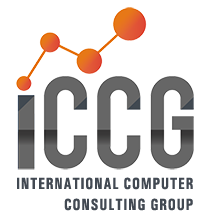

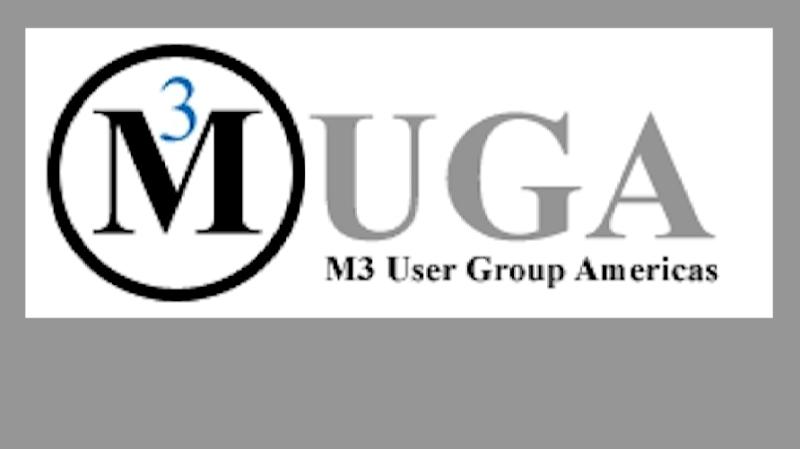
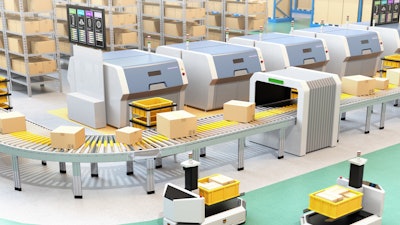



.jpg)
